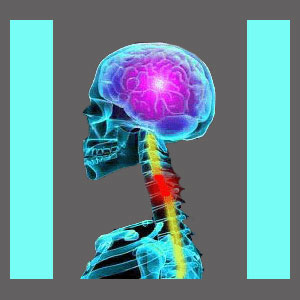
Cervical spinal stenosis is one of the most common types of central canal narrowing in the human vertebral column. The cervical spinal region, also called the neck, has a small and narrow central canal to begin with and is also subject to various degenerative processes as part of its normal lifespan. Some degree of central stenosis is almost assured in older people, particularly in the middle to lower cervical levels of C4/5, C5/6, C6/7 and C7/T1. Stenosis in the neck can also develop acutely or over time in patients of any age due to spinal injury or deterioration.
It must be stated right from the start that most cases of mild to moderate cervical stenosis are not problematic or symptomatic, although advanced and extreme cases can certainly enact terrible effects in some patients.
This resource section is dedicated to investigating all the important aspects of cervical spinal canal stenosis. We will explore the causes, symptoms, diagnosis and treatment of cervical stenosis in the discussions contained below.
Cervical Spinal Stenosis Discussions
Here are some of the many descriptive articles which detail spinal stenosis in the neck:
Cervical foraminal stenosis describes a condition in which one or more of the neuroforaminal spaces in the neck are narrowed.
Causes of cervical spinal canal stenosis vary from patient to patient, but most conditions are sourced from normal and universal spinal degeneration of the vertebral bones and intervertebral discs in the neck.
Cervical stenosis symptoms are likely to be caused by advanced cases of canal stenosis. Many patients with neck pain and back pain which are blamed on mild to moderate canal stenosis may be misdiagnosed.
Cervical spinal canal stenosis diagnosis is usually performed using advanced imaging techniques, such as spinal MRI.
Cervical stenosis treatment choices differ for each patient and might include surgical and noninvasive options, depending on the degree of the condition and the underlying causation.
Cervical stenosis surgery represents the last option any patient should explore when seeking stenosis relief.
Cervical spinal canal stenosis exercises will never cure a narrowed canal issue, but may help to manage the pain and maintain functionality in some patients.
Cervical Spinal Stenosis Truths
The cervical spine is the second most commonly implicated area to experience chronic pain, bested only by the lumbar region. The neck must bend and flex constantly, under the extreme stress created by the heavy head. It is no wonder that the cervical spine suffers serious degeneration, including the almost universal conditions of osteoarthritis, bone spur formation and degenerative disc disease. Furthermore, bulging and herniated discs are incredibly common in the middle and lower cervical areas, as is a loss of normal lordotic curvature.
All these factors can increase the chances of suffering a noticeable spinal stenosis condition in the neck. As people age, the odds of suffering more significant degrees of stenotic change increase drastically.
Cervical Spinal Stenosis Consequences
Of all the possible spinal stenosis issues which can occur, those in the cervical spine have the worst possible risks and potential neurological effects. This is due to the fact that the higher a stenosis condition exists in the spine, the more of the body’s faculties can be affected by reduced spinal cord functionality.
It should be noted that many patients with lower body symptoms, such as low back pain and sciatica, may be diagnosed with causative issues in the lumbar region, while all along cervical stenosis may be to blame. Remember to consider this if you have already tried everything to cure your lumbar spinal stenosis, but still have pain.
Cervical stenosis can also be linked to other not so obvious symptoms, as well. These may include cervical vertigo, tension headaches, facial pain and a chronic feeling of upper body tension. Learn more about cervical spinal stenosis neck pain.
Spinal Stenosis > Cervical Spinal Stenosis





